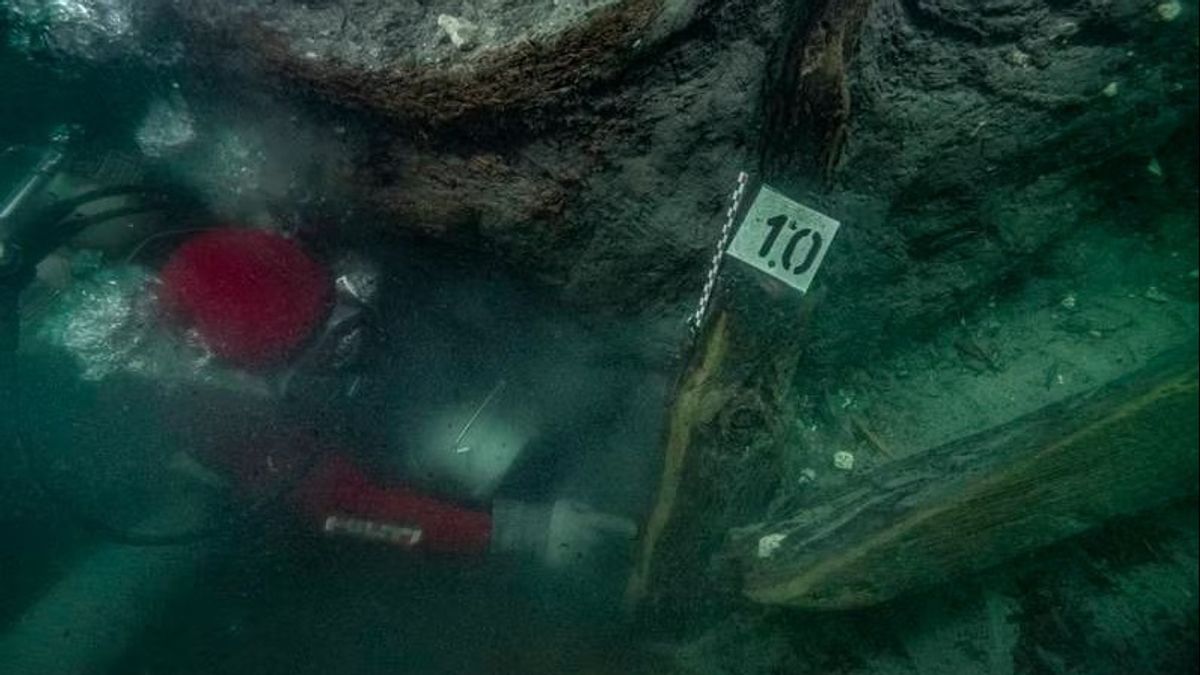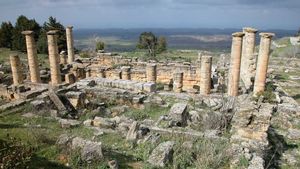
JAKARTA - The remains of ancient Egyptian temples for the Gods of Amun and a holy place dedicated to the Greek goddess Aphrodite were found in the Mediterranean Sea near the city of Alexandria, Egypt.
The discovery was carried out in the sinking Ancient City of Thonis-Heracleion, seven kilometers from Abou Qir Bay, by a joint Egyptian-France archaeological mission, according to the announcement of the European Underwater Archaeological Institute (IEASM), which has been working on the site since its discovery in 2000.
The remains of the Amun Temple consist of large stone blocks believed to have collapsed due to the devastating events that occurred in the middle of the Second Century BC.
Valuables belonging to the temple treasury were found, including silver ritual instruments, gold jewelry to a container containing perfume.
"They are witnesses to the wealth of this holy place and the piety of the residents of the port city," the agency said, quoted by The National News on October 1.
Several meters below the remains of the temple, there are underground buildings dating back to the 5th century, still supported by well-maintained poles and wooden blocks.
The discovery of this mission is assisted by a new exploration technology that allows the discovery of objects buried underground several meters.
"It is very touching to find such subtle objects, which remain intact despite violence and the magnitude of natural disasters," explained Dr. Goddio.
Not only that, a holy place dedicated to the Greek goddess Aphrodite was found on the site, where bronze and ceramic artifacts were excavated.
Artifacts found in the Amun Temple are believed to be imported from Greece.
The Thonis-Heracleion was Egypt's largest Mediterranean port for centuries until the founding of Alexandria in 331 BC.
The city sank after an earthquake that caused tidal waves and soil disbursement which caused 110 square kilometers of Nil Delta to be submerged in water. The sinking of land is also caused by rising sea levels.
The existence of a temple where Aphrodite is protected suggests that Greeks are allowed to move, live and worship in the ancient city.
Therefore, Thonis-Heracleion witnessed the start of massive trade between ancient Egypt and Greece which lasted for thousands of years because the two countries were strong civilizations in the Mediterranean.
관련 항목:
In addition, the discovery of Greek weapons on the site also made the mission suspect that Greek mercenaries had been stationed in the city.
"They maintain access to the kingdom at the mouth of the Nile, the Kanopi Branch. This branch is the largest and easiest to navigate in ancient times," the institute said.
It is known, among the many treasures that have been excavated from the city that sank since its discovery are 64 ships, 700 anchors, a pile of gold coins, a five-meter-high statue and perhaps the most prominent, remains of the great temple of Dewa Amun-Gereb.
The English, Chinese, Japanese, Arabic, and French versions are automatically generated by the AI. So there may still be inaccuracies in translating, please always see Indonesian as our main language. (system supported by DigitalSiber.id)

















